

Tangency
By: John Vereen
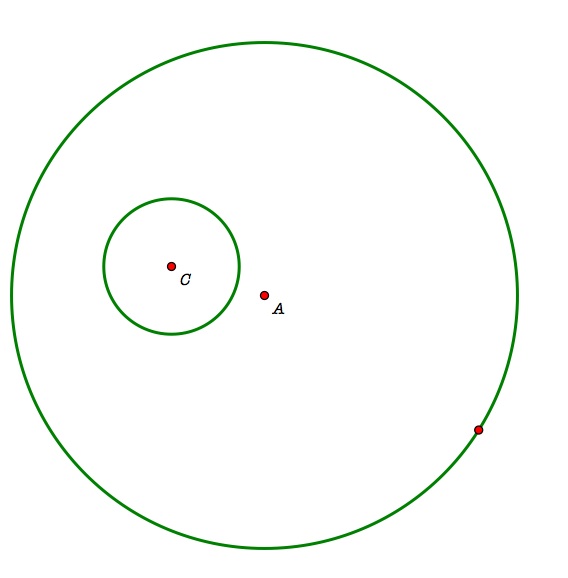
In
this exploration, we will explore how to construct a circle that is tangent to
two given circles. In the image above, we have two circles with center points A
and C. We want to construct a circle that is tangent to both circles.
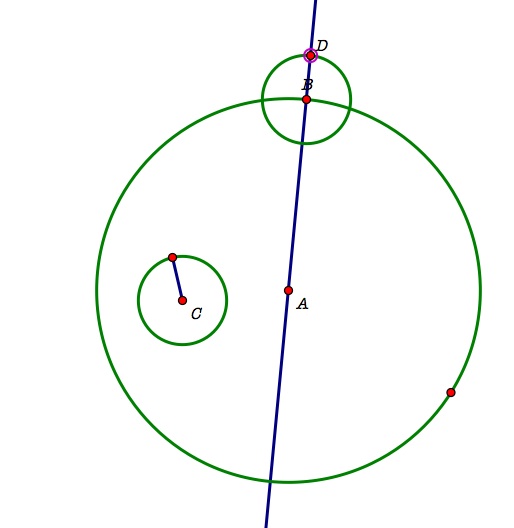
In
the image above, we first constructed a line containing radius AB for the
larger circle and a radius for the smaller circle C. Using the compass tool in
Sketchpad, we copied the radius of the smaller circle and created a circle of
the same radius with centerpoint B, which is also the
endpoint of the larger circles radius. We label point D on the enpoint of the radius of our new circle.
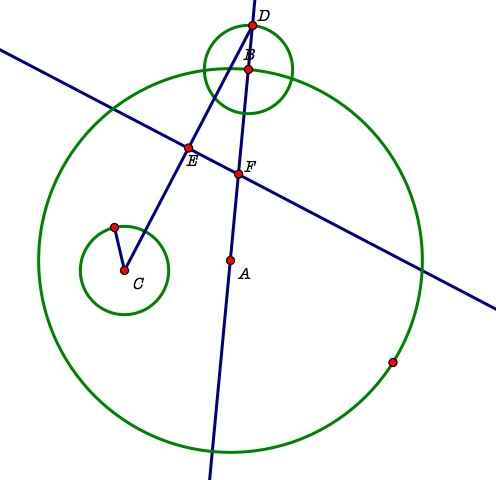
Next,
we construct a segment DC. Then, we create a midpoint E on that segment, and
construct a perpendicular bisector through that point E. After this, we create
an intersection point F on the perpendicular bisector and the line through AD
and label that intersection point F.
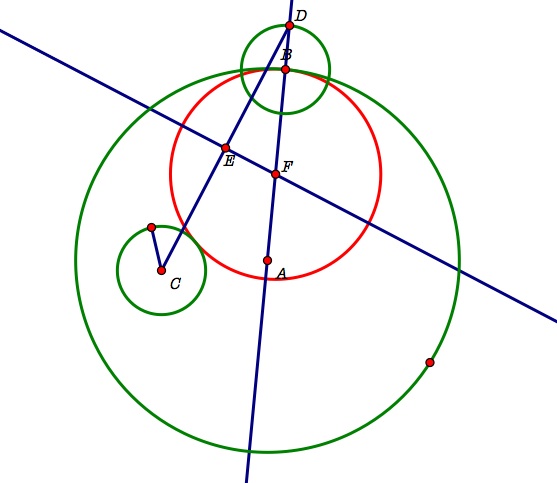
This point F will be the center point
of the tangent circle. We create the circle of tangency with a radius FB, and
we see that the circle is tangent to both the small circle with center point C
and the large circle with center point A (both green). However, in order for
this construction to be valid, we must have a circle of tangency in three specific
cases.
1)
When
the circle C is inside of the circle A

2)
When
the circles intersect
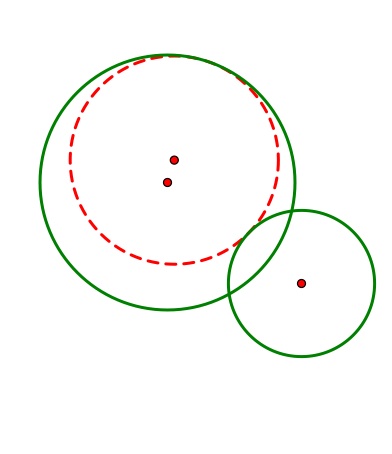
3)
When
the circle C is outside of the circle A
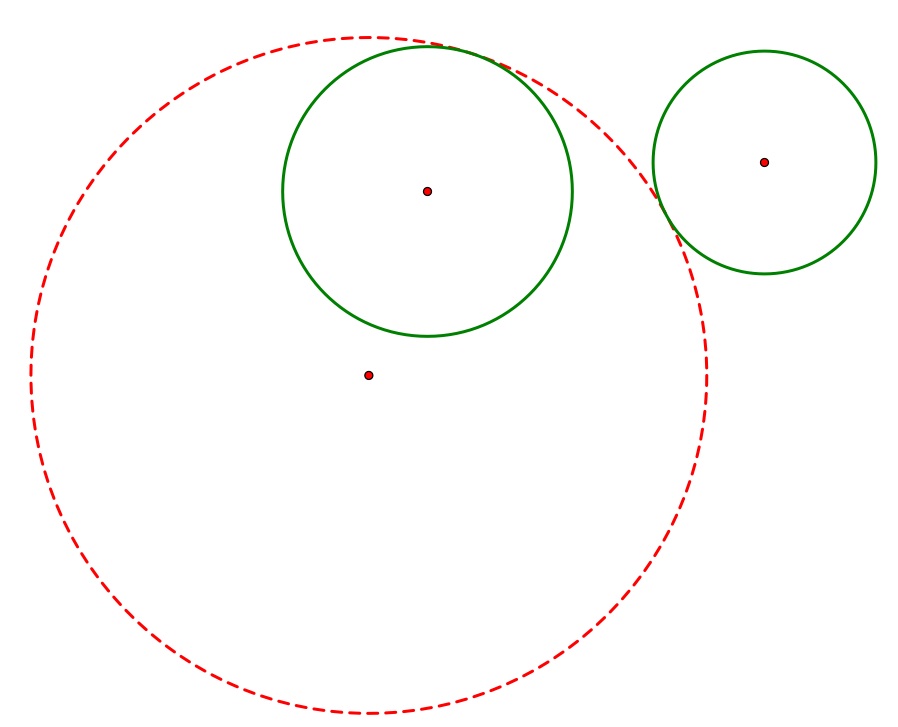
Thus, we have constructed a circle
that is tangent to two other circles. I created a tool for this construction
for further investigations of the tangent circle.